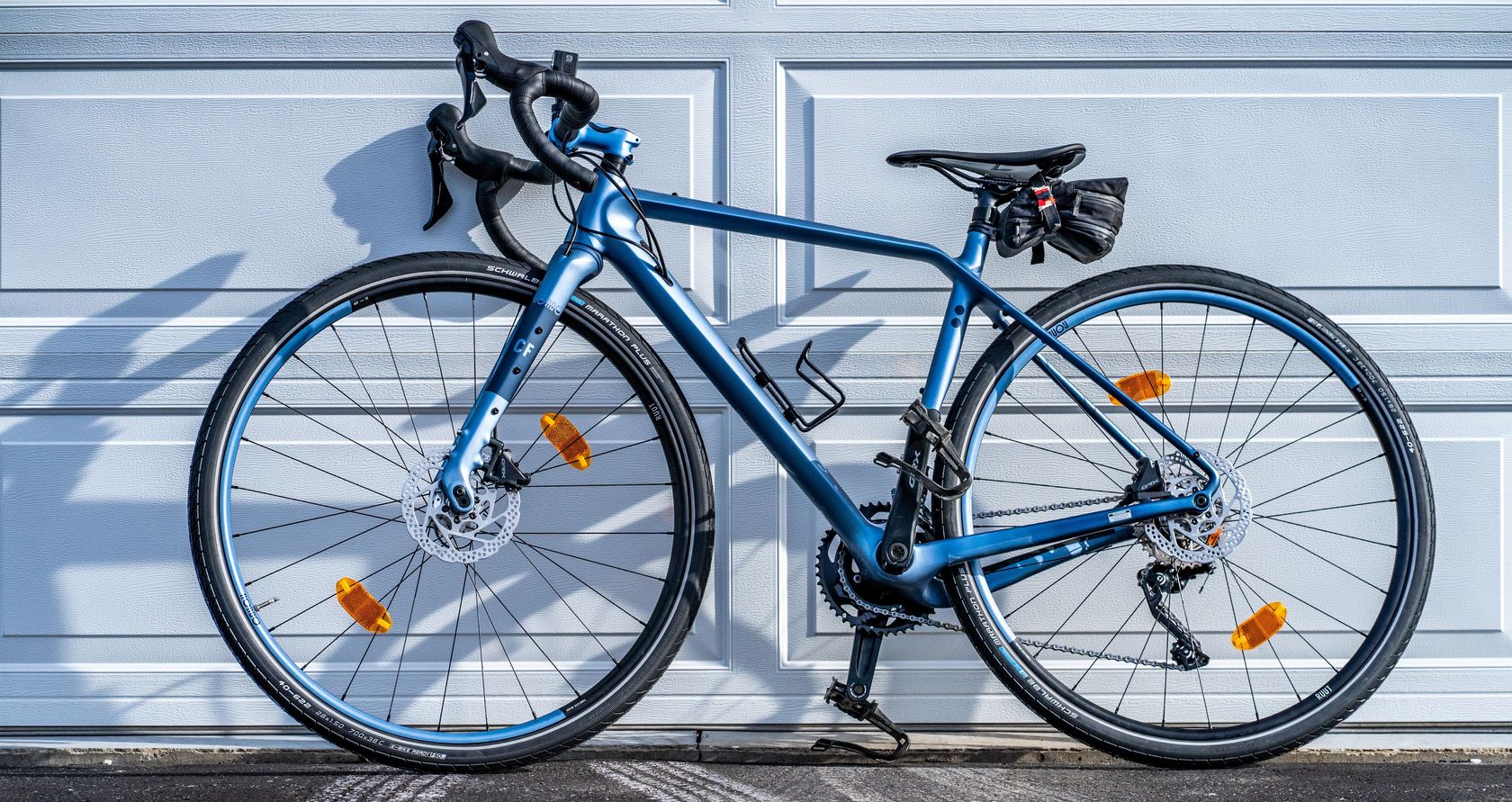Thereafter, there were some attempts to produce this structural element from different materials, but reliable, light and cheap steel is not going to give up its ground.
The history of the ‘two-wheeled vehicle’
"The bicycle has done more to emancipate women than anything else in the world," said a famous early 20th century feminist. It was for the convenience of movement on a ’two-wheeled horse’ that women, for the first time, dared to exchange large and heavy dresses and corsets for trousers and received unprecedented freedom of movement. Cyclists, with their League of American Wheelmen, have made improvements to American road surfaces. It was with the bicycles that such industry giants as Škoda and Opel began manufacturing. And humankind even made it the sky thanks to the ability of the Wright brothers, , who had initially relied on the production of bicycles.

Despite the first sketch of a bicycle made by an apprentice of Leonardo da Vinci, and later evidence of the world's first bicycle demonstrated by a certain Comte de Sivrac in France, historians have agreed to call Baron Karl von Drais the father of the popular vehicle. In 1817, this German professor obtained a patent for a two-wheeled bicycle without pedals. Modern children would call it a ‘push bike’ and von Drais dubbed it a ‘running machine’. Fifty years later, the ’penny farthing’, - amazing bicycles with a giant front wheel and a miniature rear wheel, were already riding along the roads of Europe. The bike that looks familiar to us was originally called the Rover. By the way, in Western Ukraine bicycles are still called ‘rovers’. The very first Rover was assembled by the Englishman John Kemp Starley and produced in 1885. It is interesting that steel was used almost immediately in the production of these ‘iron horses’.
Evolution of steel bicycle frames
The frame is the basic structure of a bicycle: as a rule, it has a rhombus shape and consists of two triangles, to which the rest of the vehicle is attached. The frame should be strong, rigid and light. In order to fulfil these requirements, manufacturers experiment with a variety of materials. It can be wood and bamboo (aesthetically, the frame turns out to be very attractive), beryllium (US$26,000 per bike) or titanium (also an expensive solution). Steel and aluminium are most commonly used for the mass production of bicycles. However, light and durable carbon composites are more and more often replacing metals and alloys in the manufacturing of frames and other elements for professional cycling.

Historically, lugs were inserted into steel fittings or otherwise, and then steel tubes were soldered, which made up part of the rhombus-shaped frame structure. The lower brazing temperature had a less negative impact than welding, which requires a higher temperature. But over time, the steel industry has offered the market steels that do not lose their properties during the welding process.
As a result, welded steel frames have now been abandoned for mass market bicycles and they are used for more expensive models. It should be noted that the ‘premium’ lug design allows replacement of frame parts with little or no damage to the adjacent steel tubes.
Moreover, the reduction in the cost of bicycle production has been achieved through the use of modern high-strength steels, which are also used in the production of cars, railway wagons and tanks, ground and underground machinery, and much more. Chrome-molybdenum steel 4130 is also very widespread and both high-quality frames and other bicycle parts are made from it.
An excellent example is the story of the British The Reynolds Tube Company, founded in the late 19th century by the entrepreneur John Reynolds, who was in the consumer goods business before steel tubes. The Reynolds Tube Company’s 'speciality' is a butt tube that is thicker at the ends than in the middle, which has proven to be ideal for bicycle frames. Over time, the company became the world's largest manufacturer of bicycle components.
The famous Reynolds medium-carbon manganese-molybdenum steel #531 was introduced to the market in 1935. It was preferred by most bicycle frame manufacturers, mainly due to its very wide assortment. Reynolds was ready to set up production of pipes of a certain diameter or thickness, even for the needs of one large buyer. Such flexibility made The Reynolds Tube Company almost invulnerable, even after better alloys hit the market.

However, the beginning of the widespread use of welding in bicycle frames led to the end of the hegemony of the 531. This alloy lost its properties under high temperatures. As an alternative, the company offered 520 and 525 chromium-molybdenum steels, from which the frame can be made either by soldering or welding.
Nonetheless, Reynolds continues its usual super-customer-oriented strategy. They are still ready to release limited editions of the legendary "531" for pre-order.
The Columbus Tubi family business, located near Milan, has been the main competitor of The Reynolds Tube Company in the bicycle tube market for many years. Founded in 1919, the company merged with GRUPPO SRL, which produces the popular Cinelli bicycle brand. Columbus steel pipes are also used by other well-known Italian bike producers. In general, Reynolds and Columbus are now the most famous bicycle tube manufacturers in the world.
Steel vs Aluminium
However, despite the fact that steel has historically been the most common material used in the production of bicycles, manufacturers have to demonstrate the advantage of steel frames over aluminium (and over carbon fibre in recent years) ones.
Without a doubt, if you focus on the strength of the ‘two-wheeled vehicle’, then the decision should favour the bicycle with a steel frame only. It is both stronger and more durable than aluminium one. The advantage of the steel frame is especially felt when riding a mountain bike. Moving on rocky ground is always accompanied by a lot of shaking and the steel will absorb the impacts as much as possible. Moreover, the steel frame can reduce, to some extent, collisions with obstacles on the mountain road, and, accordingly, reduce the risk of falling off the bike.

When it comes to rust, steel and aluminium bicycles are a draw. Both materials are quite resistant to corrosion, and you will hardly ever see it on modern bikes.
And finally, regarding the weight of the vehicle, this characteristic is certainly the moment of glory for aluminium, which is significantly lighter than steel. This is important when a cyclist rides city streets or over fields. In addition, the "light aluminium frame makes it possible to move easily without the extra effort required to accelerate the steel bike. Still, in terms of the smoothness of the surface, some Ukrainian roads are closer to mountain roads, and not to flat terrain. In other words, our cyclists in the vast majority of cases have to ride on uneven surfaces. In these conditions, the additional weight of the steel frame becomes, not a hindrance, but a necessary option that can provide the needed shock absorption.
But traffic jams and the constant shortage of parking places in business centres cause a lot of inconvenience both to residents of Ukrainian cities and visitors. This discomfort is familiar to car users in many countries and it is the reason why more and more people are thinking about using a bicycle when travelling short distances. In addition, people are increasingly concerned about keeping fit and are engaged in healthy lifestyle ideas. All these factors, according to researchers from Grand View Research, will drive the volume of the global bicycle frame market, which will reach US$32.8 billion by 2027, and from 2020 to 2027, sales will grow by 6.1% annually. Steel bicycles will be one of the drivers of this expansion due to their unique combination of reliability and affordable prices.
